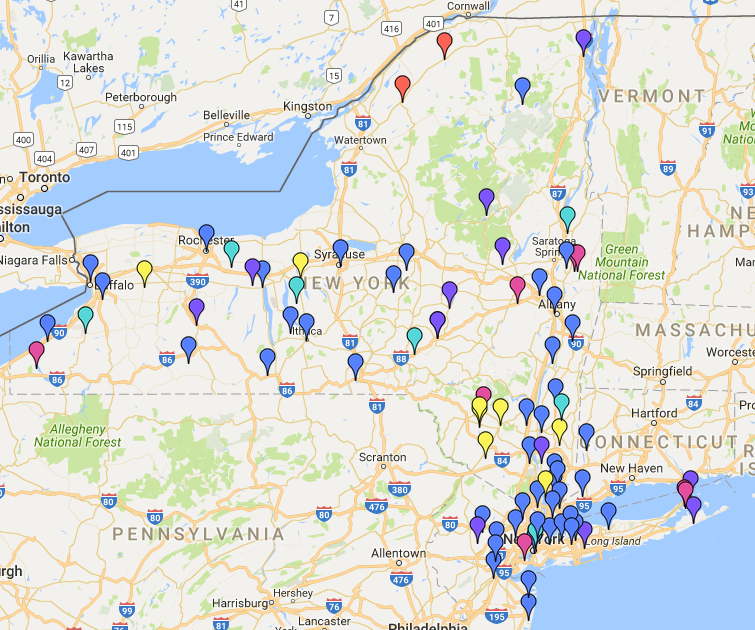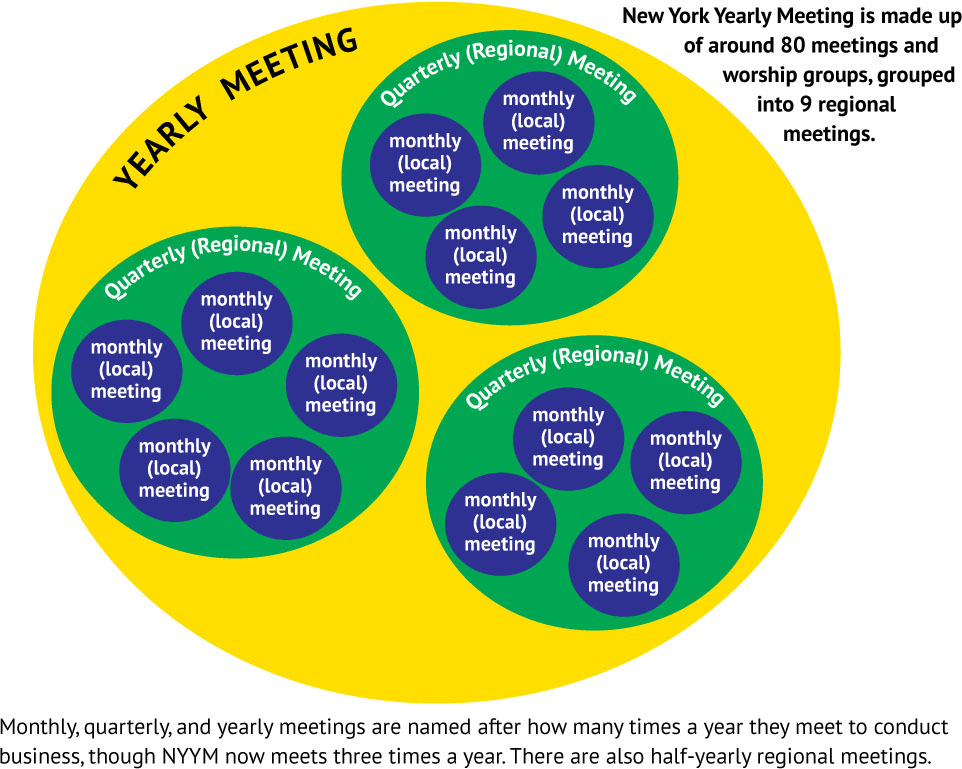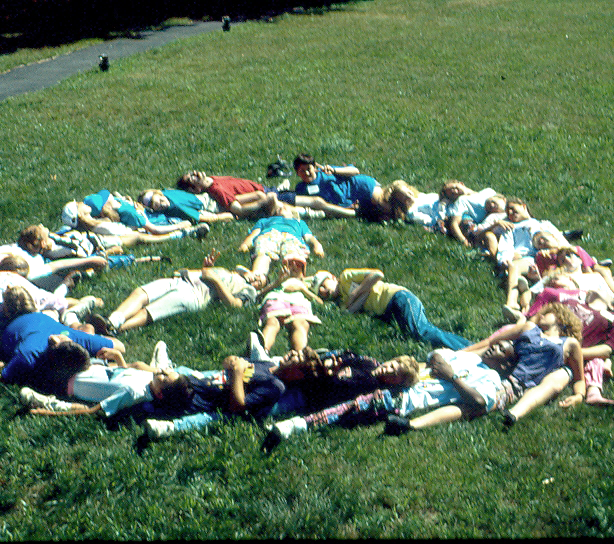Study Excerpts: The Never Broken Treaty
Study Excerpts from
The Never Broken Treaty?
Sarah Chandler, Canadian Yearly Meeting, 2001
(The entire speech can be downloaded here.)
There are a number of things I would like us to think about together today. I would like us to think about our relationship to land, and how that relationship does and does not mirror the relationship of Indigenous Peoples to land. I would like us to consider the testimony and witness of early Friends regarding Indigenous/Aboriginal Peoples and our relationship to them and their lands. I would also like us to reflect on the meaning of treaties, both to early Friends and to
ourselves today. I would like us to reflect on the relationship between law and politics and consider what our own witness should be in this regard. Finally, I would like us to look at our relationship with Aboriginal peoples today . . . what is it? What might it be? What prevents it from being all that it might be?
Who are Indigenous Peoples?
To begin with, let us consider the definition of Indigenous Peoples. The Working Group on Indigenous Populations at the United Nations in Geneva has concluded that there is not a definition that can be applied from outside. It has concluded, as affirmed by Indigenous Peoples the world over, that they alone have the right to self-define.
Nevertheless, Martinez Cobo, in his 1986 report for the UN Sub-Commission on the Prevention of Discrimination against Minorities, presented the following working definition, which may be helpful to us in our exploration today:
“Indigenous communities, peoples and nations are those which, having a historical continuity with pre-invasion and pre-colonial societies that developed on their territories, consider themselves distinct from other sectors of the societies now prevailing in those territories, or parts of them. They form at present non-dominant sectors of society and are determined to preserve, develop and transmit to future generations their ancestral territories, and their ethnic identity, as the basis of their continued existence as peoples, in accordance with their own cultural patterns, social institutions and legal systems.”
Having considered a working definition of who it is that we are thinking about today, let us move on to think about land.
Land
I would like to commission an anthropological study on the mind set of non-native people—to look at how they process information that comes from us. What does sacred land mean to non-native people? I’d like an anthropologist to look at this. —Morris Amos, Kitamaat Council
Reflection
Please take a moment to think about your own relationship to land. This land that comes to mind . . . is it land that you visit? Is it land that you own? If so, how did you come to own it? Is it land that someone else owns? Is it possible to own land? What does it mean to own land? Who else do you know that has a relationship to that same piece of land? What are their interests?
Madame Daes has spent four years preparing, first, her initial report on the relationship, followed by two working papers which describe her subsequent findings as she consults Aboriginal Peoples, states’ governments and non-governmental organizations (NGOs) for
further input. She identifies the following elements of relationship to land as being unique to Indigenous Peoples:
- A profound relationship between indigenous peoples and their lands, territories and resources exists.
- This relationship has various social, cultural, spiritual, economic and political dimensions and responsibilities
- The collective dimension of this relationship is significant and
- The inter-generational aspect of such a relationship is also crucial to indigenous peoples’ identity, survival and cultural viability.
Reflection
Please reflect again on the land that is important to you. What is, or has been, the relationship of this land to Indigenous Peoples? What should it be today? What can we, as individuals and as meetings, do to fairly reinstate the relationship of Indigenous Peoples to their own lands and resources?
“The Great Spirit”, said Penn, “who made me and you, who rules the heavens and the earth, and knows the innermost thoughts of man, knows that I and my friends have a hearty desire to live at peace and friendship with you, and to serve you to the uttermost of our power. It is not our custom to use hostile weapons against our fellow creatures, for which reason we have come unarmed . . . . We are met on the broad highway of good faith and good will, so that no advantage is to be taken on either side, but all is to be openness, brotherhood and love.” (Vipont, Elfrida. The Story of Quakerism. London: Bannisdale Press, 1954, 119)
Reflection
Please take a moment to reflect again on the land that you relate to: What are the historic treaties that have been negotiated between peoples who share or shared this part of the
landscape? Why were treaties negotiated there? What were the understandings of the parties at the time of negotiation? Have the terms of the treaty been upheld?
Treaty of Shakamaxon
“The white man and the red man are to be as brothers. All paths are to be open to both. The doors of the settler will be open to the Indian, and those of the Indian to the settler. They will not listen to false reports of one another. If quarrels arise, they will be settled by a jury of six on each side and then forgotten.” (Vipont, The Story of Quakerism, 73)
Reflection
Locks can be physical or metaphorical. For the Dene, a locked door can mean the difference between life and death. Please take a moment to reflect on the locks that may be a part of your own life: a lock on the door, a lock on the mind, a lock on the heart. What is protected by these locks? Who is it that is kept out? What harm may come to them as a result?
Lucretia Mott, speaking at the Abington Peace Meeting in 1869 said: “Our friend has spoken of the barbarities which have been practiced towards the Indians, and of their present condition of degradation in contrast with their condition when William Penn landed on this continent. It occurred to me to ask if Friends were truly alive to their situation and to the fact of the treatment they have received from the agents who have been employed by the government and who have wronged them so shamefully, whether there would not have been more frequent and more earnest protests and appeals to the government on their behalf. We have not considered the wrongs of Indians as our own. We have aided in driving them further and further west, until, as the poor Indians said, ‘You will drive us away, until we go beyond the setting sun.’ I wonder if, with the profession we Friends have made, of care for the Indians, we have been active enough in our labour.”
Reflection
Please reflect again on your personal and community relationship with indigenous people: If you have a relationship with indigenous people, is it all that it could be? What would help to strengthen it? If you don’t have a relationship with indigenous people, where might you begin to develop such a relationship?
Denial
“That which brings war into the world is justice delayed and justice denied.” (Passover Seydr quoted in Meeting for Worship, Toronto, March 2001)
Reflection
If we are not engaged in relationship with indigenous people nor in supporting indigenous issues, what is it that prevents our engagement, as individuals and as meetings?
“We are all responsible for the society in which we live. We cannot dismiss the casualties of the system by saying they have brought it all on themselves. It is our belief that there is that of God in everyone. In those who create the hurt and those who are hurt. In different ways and degrees we are all both. This may be denied by society and, indeed, by the individual. But, we cannot join in the widespread ‘writing off’ of people, without denying our central testimony to and experience of the potential of love to transform violence and hatred. It is, therefore our spiritual responsibility to examine the nature of society: how far does it encourage the great Christian virtues of selfless love, simplicity, peacefulness, truth and a sense of the quality of all as children of God which is the foundation of true community?” (Dale, Jonathan et al. Faith in Action: Quaker Social Testimony. London: Quaker Home Service, 2000, 7)
Reflection
Please tenderly hold yourself in the Light. Reflect upon where you stand in the trajectory between denial and acknowledgment of indigenous peoples’ history and rights. Ask
yourself, “Where do I feel led to go from here?” Ask God, “Where will You have me go from here?”
The World Conference against Racism
Lilamani Woolrych, in Communicating across Cultures writes: “Racism is a form of violence. It cannot always be ‘recognized’ by bombs, bullets and blood. There are also inward weapons we use to do emotional and spiritual violence to others and ourselves. It is important to recognize this as part of our peace testimony, in the context of racism. Supporting our peace testimony does not automatically confer upon us protection from racist attitudes.”
Reflection
Will we truly welcome people of other cultures as our neighbours? as our senior manager, teachers, pupils or in our work places? Will we be truly happy to give hospitality in our homes and share a meal with those who live out their traditional cultures in daily life? If not, why not?
Last year, the Indian Law Resource Centre, an international non-governmental organization in consultative status with ECOSOC, submitted the following statement to the Secretariat of the World Conference against Racism:
“Racism as it affects indigenous peoples is not well understood by non-indigenous peoples. Ignorance of the many manifestations of racism as it affects indigenous peoples fosters the deprivation of the basic rights of indigenous peoples to cultural and physical security, and to self-determination. Racism against indigenous peoples, like racism against other peoples, has deep roots in the economic, political and social institutions of nations. This racism continues to dominate the laws and policies relating to indigenous peoples today.” (Woolrych, Lilamini. Communicating across Cultures. York (UK): Joseph Rowntree Charitable Trust, 1998, 53)
It’s the “not me” in thee that makes thee precious to me. —Rachel Davis DuBois
Reflection
Holding ourselves and our communities tenderly in the Light, let us carefully discern where racism may affect our thinking and our relationships with others, especially aboriginal people.
What I am asking you to do is to become involved in aboriginal justice issues. I am asking you to do this, at whatever level you feel is appropriate for you: local, regional, national, with a recommendation that you start with the local.
I am asking you, as individuals, as worship groups and as meetings, to take some time to inform yourself by reading indigenous news media, watching the aboriginal television network, extending your personal relationships to include indigenous people. I am asking you to ask questions . . . historical questions and contemporary questions.
I am asking you to sow the seeds of peace.
I am asking you to enter into dialogue with indigenous people, with Friends experienced in Indigenous Peoples’ issues and with our governments, at both the political and the bureaucratic levels.
I am asking you to consider deeply the testimony and witness of John Woolman, Lucretia Mott, and other Friends who have tried to work in solidarity with Indigenous Peoples between their time and ours. I am asking you to come under the weight of our collective concern.
I am asking you to seek deeply whether denial is playing a role in your own relationship to Indigenous Peoples and their issues.
I am asking you to hold in your hearts the principles articulated in the Treaty of Shakamaxon.
I am asking you to hold in the Light, the information we have shared this evening, and to remember that the UN Human Rights Committee has said in its response to Canada’s most recent report, that the most outstanding human rights abuses in Canada today are those that continue to be perpetrated against Aboriginal Peoples.
This item is part of





